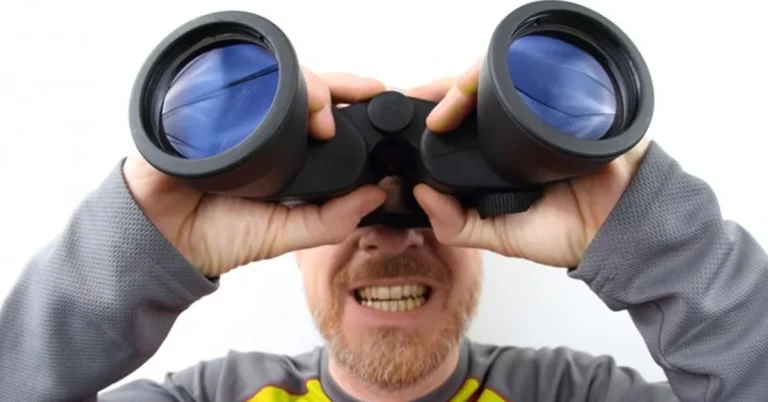Bioptic telescopic lenses are specialized visual aids that are used to help people with low vision see distant objects more clearly. These lenses are a combination of a standard pair of eyeglasses and a small, powerful telescope. The bioptic telescopic system enhances the central vision of individuals who suffer from visual impairments due to conditions like macular degeneration, glaucoma, or diabetic retinopathy. These devices help individuals with impaired vision gain better access to details in their environment, thereby improving their overall quality of life.
In this article, we will dive deep into bioptic telescopic lenses, how they work, the benefits they offer, and the types of conditions that can be treated. We will also look at how they differ from traditional eyeglasses, their limitations, and the process of getting fitted for these lenses. Additionally, we will answer some frequently asked questions (FAQs) to help you understand bioptic telescopic’s lenses more thoroughly.
TRENDING
What Disqualifies You From Donating Eggs: Key Reasons Explained
What Are Bioptic Telescopic Lenses?
Bioptic telescopic’s lenses are specialized optical devices that consist of a small telescope mounted on a pair of regular prescription glasses. The telescope provides magnification of distant objects, allowing the wearer to see things more clearly. Bioptic telescopes are primarily used by individuals with low vision who have difficulty seeing objects at a distance. These telescopic lenses are typically mounted at the top of the eyeglass lenses, allowing the user to glance down to use their regular prescription lenses for near tasks, while using the telescope to view distant objects when necessary.
Key Features of Bioptic Telescopic Lenses:
- Telescope magnification: The telescope part of the lens provides magnification for distant objects.
- Regular prescription lenses: The person can still use their prescription lenses for close-up tasks like reading.
- Compact design: The lenses are lightweight and unobtrusive, making them easier to use than bulky alternatives.
- Adaptable for various conditions: These lenses can be customized to meet the specific needs of each individual, depending on their vision impairment.
How Do Bioptic Telescopic Lenses Work?
Bioptic telescopic’s lenses work by providing magnification through a small, mounted telescope, making distant objects appear larger and clearer. These lenses are designed to be used intermittently. The user can switch between their regular prescription lenses for near tasks and use the telescopic lenses to view distant objects. The telescope itself magnifies the image, enabling better recognition of people, signs, or other far-off objects.
The bioptic telescope typically has a fixed magnification level. However, some models can be adjusted depending on the specific visual requirements of the user. Additionally, these lenses are usually mounted on the top portion of the eyeglass frame, making them easy to look through when needed.
The Mechanism Behind Bioptic Telescopic Lenses
When a person wears a bioptic telescope, they can look through the magnifying lens and focus on distant objects such as road signs, faces, or text from a far distance. The eyeglass lenses act as a regular prescription pair of glasses for close-range activities, such as reading or using a computer. Users must learn how to alternate between the telescopic lens and their regular lenses to achieve the best possible vision in different environments.
Who Can Benefit From Bioptic Telescopic Lenses?
Bioptic telescopic’s lenses are particularly beneficial for individuals with visual impairments that limit their ability to see objects at a distance. Some of the most common conditions that can benefit from bioptic telescopic’s lenses include:
Macular Degeneration
Macular degeneration is a condition that causes the central part of the retina (the macula) to deteriorate, leading to vision loss in the center of the field of view. Bioptic telescopic lenses can help those with macular degeneration see more clearly in the distance, allowing them to perform activities like driving or watching television.
Glaucoma
Glaucoma is a condition that damages the optic nerve, resulting in peripheral vision loss. For those with advanced glaucoma, bioptic telescopic’s lenses can help enhance the central vision, improving their ability to see distant objects.
Diabetic Retinopathy
Diabetic retinopathy is a complication of diabetes that causes damage to the blood vessels in the retina, leading to vision impairment. Individuals suffering from diabetic retinopathy can benefit from the magnification power of bioptic telescopic’s lenses to make distant objects clearer.
Retinitis Pigmentosa
Retinitis pigmentosa is a hereditary condition that leads to the gradual degeneration of the retina. As the condition progresses, peripheral vision is lost, and night blindness can occur. Bioptic telescopic’s lenses can help these individuals improve their ability to see in different lighting conditions.
Other Low Vision Conditions
Other low vision conditions like optic neuropathy, cataracts, and traumatic brain injury may also benefit from bioptic telescopic lenses.
How Bioptic Telescopic Lenses Improve Vision
Bioptic telescopic lenses improve vision by providing magnification of distant objects. This enhancement allows people with visual impairments to better perform tasks like reading street signs, watching sports, identifying faces, and engaging in other everyday activities. Here are a few ways bioptic telescopic’s lenses improve vision:
- Enhanced distance vision: The magnification makes it easier to identify distant objects or people, improving the user’s ability to navigate public spaces and participate in outdoor activities.
- Improved mobility: With better vision at a distance, users can confidently walk, drive, and navigate busy environments.
- Increased independence: By providing improved vision for tasks like reading signs and recognizing faces, bioptic telescopic lenses can help individuals maintain independence and engage more actively with the world around them.
- Greater safety: Enhanced vision helps users avoid obstacles and hazards, improving safety in public spaces and on the road.
Types Of Bioptic Telescopic Lenses
Bioptic telescopic’s lenses come in different types, depending on the level of magnification needed, the wearer’s specific vision needs, and the frame design. These include:
Fixed Power Telescopes
Fixed power telescopes have a single magnification level, providing consistent magnification for the user. These are ideal for people with stable vision needs who do not require adjustments to their magnification power.
Zoom Telescopes
Zoom telescopes allow users to adjust the magnification level, offering more flexibility. This type of bioptic lens is helpful for individuals who need different magnifications for different activities.
Handheld Telescopes
Some bioptic telescopic lenses are designed to be handheld. These can be used on-demand, and the user can hold them at different distances to achieve the desired magnification.
How To Get Fitted For Bioptic Telescopic Lenses
Getting fitted for bioptic telescopic lenses involves a detailed eye exam and assessment by a low vision specialist or optometrist. During this process, the specialist will:
- Assess vision needs: The optometrist will evaluate the user’s visual impairment, including distance and near vision needs.
- Determine magnification level: Based on the user’s condition, the optometrist will recommend the appropriate level of magnification for the telescope.
- Select appropriate frames: The right frames will be chosen to accommodate the telescope and ensure a comfortable fit.
- Provide training: Learning to use bioptic telescopic lenses can take time, so optometrists often provide training to help the user get accustomed to alternating between the telescope and regular lenses.
Limitations Of Bioptic Telescopic Lenses
While bioptic telescopic lenses can be highly beneficial, they do have some limitations. These include:
- Limited field of view: The field of view through the telescope is narrower compared to normal vision.
- Training required: Users must practice and train in order to effectively use the telescope for distance vision.
- Not suitable for all conditions: Bioptic telescopic lenses are not always suitable for everyone with low vision, especially those with severe central vision loss or other extreme conditions.
Conclusion
Bioptic telescopic lenses can be a game-changer for people with low vision, providing enhanced distance vision and improving overall mobility and independence. Whether you suffer from macular degeneration, glaucoma, diabetic retinopathy, or other low vision conditions, these lenses can help you live more fully and safely.
If you or someone you know might benefit from bioptic telescopic lenses, it’s essential to consult with an eye care professional who can assess your needs and guide you in selecting the right lenses.
ALSO READ: What Does WSTM Mean? Understanding The Acronym Explained
FAQs
What is a bioptic telescopic lens?
A bioptic telescopic lens is a specialized optical device consisting of a telescope mounted on a pair of prescription glasses. It provides magnification for distant objects, helping individuals with low vision improve their ability to see clearly at a distance.
How do bioptic telescopic lenses help people with macular degeneration?
Bioptic telescopic lenses provide magnification for distant objects, which helps people with macular degeneration see more clearly and recognize objects and faces that would otherwise be blurry or hard to discern.
Are bioptic telescopic lenses difficult to use?
Using bioptic telescopic lenses may require some practice, as users must learn to alternate between their regular prescription lenses and the telescopic lenses. However, with proper training from an eye care professional, most users can quickly adapt.
Can bioptic telescopic lenses be used for driving?
Yes, bioptic telescopic lenses can improve vision for tasks like driving, as they help with seeing road signs and distant objects clearly. However, the ability to drive with bioptic lenses varies by individual and local regulations.
How long does it take to get used to bioptic telescopic lenses?
It can take some time to get used to using bioptic telescopic lenses, especially when it comes to switching between magnification for distant and near vision. Most users require a period of adjustment and training from a vision specialist.

